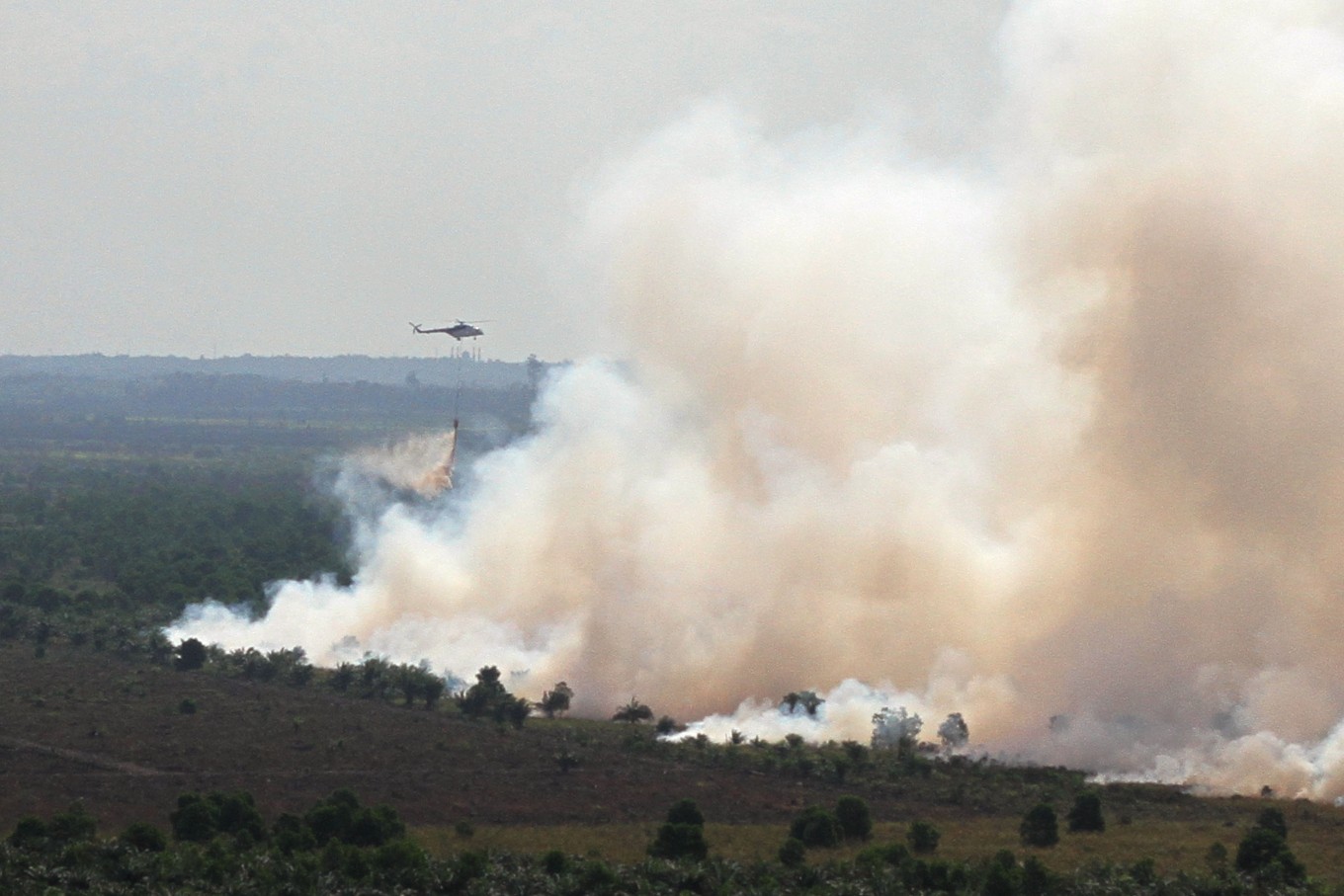Popular Reads
Top Results
Can't find what you're looking for?
View all search resultsPopular Reads
Top Results
Can't find what you're looking for?
View all search resultsWicked fires: Managing fire risk in changing climate
After widespread forest fires in Indonesia and Brazil in 2019, and the more recent catastrophic summer fires in Australia, it is timely to explore the context behind these extraordinary events and consider the potential future impact amid changing climate.
Change text size
Gift Premium Articles
to Anyone
A
fter widespread forest fires in Indonesia and Brazil in 2019, and the more recent catastrophic summer fires in Australia, it is timely to explore the context behind these extraordinary events and consider the potential future impact amid changing climate.
The issue of uncontrolled forest fires is the result of a range of complex issues that have often been described as a “wicked problem” because of incomplete or contradictory knowledge about the cause of fires, the range of valid but often competing perspectives and the interconnected nature of the issues and complexities associated with forest fires.
Australia experienced its driest and hottest year on record in 2019, resulting in over 18 million hectares burned. Indonesia also had significantly lower rainfall levels during its annual dry season in 2019. Riau in central Sumatra received only 47 percent of its long-term average rainfall during this period, resulting in very difficult fire conditions. The Indonesian government reported 857,756 hectares of burned land last year, generating haze that blanketed the wider region.
The catastrophic fires experienced in 2019 were exacerbated by a dry phase Indian Ocean Dipole (IOD), which affected rainfall in both Indonesia and Australia. This unusually strong dry phase was associated with cooler than normal waters in the eastern Indian Ocean resulting in significantly drier conditions, increased fire danger and a delay to the start of the annual wet season across the region.
What is of real concern is that long-term trends indicate that these IOD dry phases are likely to become more common and indeed more intense.
The common theme from these events is that while starting small, if not managed, fires can get out of control and burn large areas well beyond the original ignition point with a range of flow on impacts, like damage to crops, infrastructure, intact forests, as well as haze. Smoke haze from forest fires in Sumatra and Kalimantan in 2019 was recorded at dangerous levels across the region.
Smoke haze has well recorded impacts on humans, from a mild sore throat, runny nose and red eyes to more acute issues like asthma, bronchitis, pneumonia and cardiovascular outcomes. Less well understood are the long-term implications of prolonged exposure to smoke haze that may include premature death related to heart attacks and stroke, as well as impacts on the growth and development of children.
Fire can also have significant environmental impacts, leading to a reduction of soil nutrients, lower water quality and an increased risk of soil erosion, all of which affect sustainable forest management.
In discussing this “wicked fire” problem it is important to note that this is not about placing blame but understanding the complexity of each landscape in its own social, economic and environmental context.
In Australia, there are specific issues related to natural sources of fire like lightning, development along urban/forest interfaces, fuel management strategies, as well as the effects of climate change, which are all part of an ongoing debate over the causes, impacts and responses to wildfire.
Indonesia’s forests, by contrast, appear to have limited natural sources of fire. Despite annual dry seasons, the chances of large-scale devastating fires starting from natural causes, like lightning, are low. Most fires in tropical regions are deliberately lit as a cheap and effective means to clear land for agricultural use.
Data also indicates that forest fires in Indonesia are not restricted only to peatland, nor do they mainly occur on plantations or company concessions.
Early analysis of Indonesian fires in 2019 showed that over 75 percent of the burned area was idle or abandoned land that had been subject to burning in previous years. Managed landscapes like large-scale concessions, in contrast, are far more likely to be fire-free. Fires are more likely in areas where there is new development, particularly where there is land-use change associated with new agriculture.
There are certainly a number of actions individuals, companies and governments can take to understand and address the core issues, including the need to enhance levels of fire management throughout organizational supply chains. Fire prevention, one element in a broader fire management strategy, can be a particularly effective intervention. Initiatives like the Fire Free Village Program (FFVP) demonstrate that communities and companies can work together to develop viable and sustainable fire prevention programs.
The FFVP was developed in 2014 as part of a partnership between APRIL and local communities to better understand and engage with the fire and smoke haze issues. In 2015, one of the worst fire seasons in Indonesia’s history, participating “fire-free” communities reduced burned area by over 90 percent
There is also a need for appropriate institutional frameworks to assist companies and communities in managing these increasingly important issues. The Pelalawan District Fire Klaster pilot is one example, where stakeholders are provided a platform to come together to discuss, plan and coordinate responses at the local level.
The Indonesian based Fire Free Alliance (FFA) has allowed participating parties to share information on best practices, effective intervention and techniques in a trusted and open way.
Governments have a leading role to play in fire prevention. The operational evidence shows that increased community awareness and government enforcement of fire management regulations has played a key role in raising the profile of fires as a critical social and environmental issue.
Climate change is likely to lead to drier conditions and longer dry seasons, so if this wicked problem is to be finally addressed it needs to be supported by increased scientific research into fire science, as well as an open and respectful dialogue between all stakeholders.
Experience in Riau, Sumatra, demonstrates that with government support, community-level fire prevention initiatives can be extremely effective. More work is needed, as fire seasons have become longer and more extreme. This includes helping local communities understand the significant impacts of smoke haze on their health and long-term well-being. It also means facilitating appropriate sustainable solutions as an alternative to burning.
The writer is sustainability operations manager of APRIL Group. The views expressed are his own.










